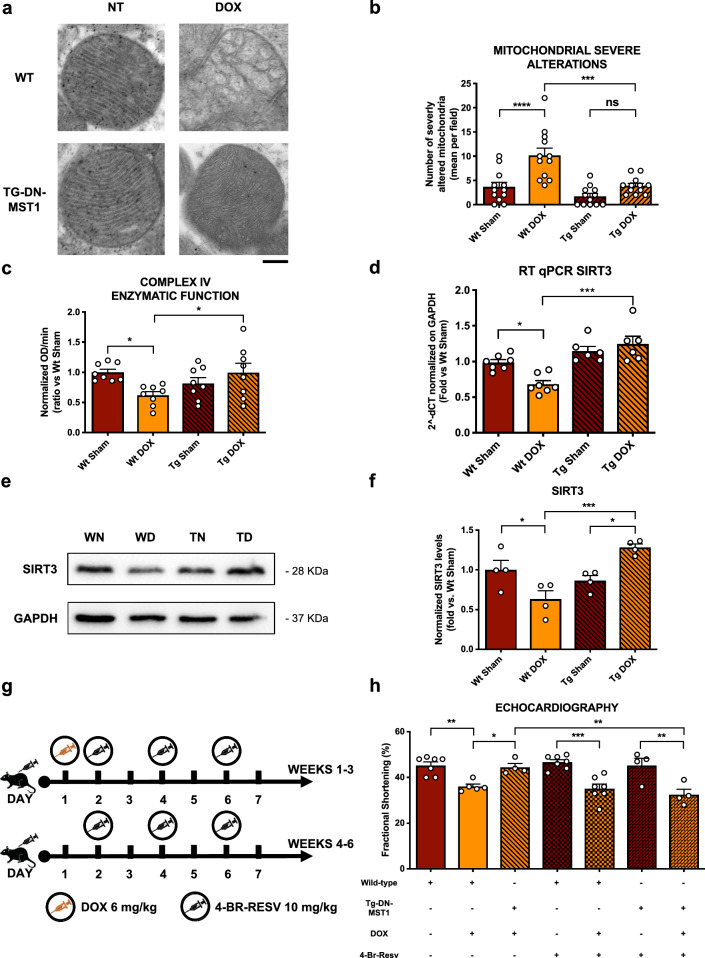Fig. 6.
MST1 inhibition reduces DOX-induced cytotoxic mitochondrial alterations by SIRT3 uperegulation in vivo, a Representative TEM images of myocardial mitochondria from mice treated with DOX, six weeks after the first administration. Scale bar = 0.2 μm; b quantification of the number of mitochondria presenting severe alterations per microscopic field. Data represent mean ± SEM (n = 12 microscopic fields from 3 independent samples); c colorimetric evaluation of mitochondrial complex IV enzymatic function measured as –OD/min slope. Data represent mean ± SEM (n = 8 independent samples); d SIRT3 mRNA expression profile in myocardial lysates deriving from mice treated with doxorubicin reaching a final cumulative dose of 18 mg/kg. Data represent mean ± SEM (n = 6–7 independent samples); e–f SIRT3 protein expression profile in myocardial lysates deriving from mice that were treated six weeks with doxorubicin reaching a final cumulative dose of 18 mg/kg. Densitometric data normalized by loading control represent mean ± SEM (n = 4 independent samples); g diagram of the experimental procedure used for the i.p. administration of the SIRT3 inhibitor 4’-Br-Resveratrol together with doxorubicin; h functional echocardiographic analyses of the fractional shortening measured on mice treated with both doxorubicin and 4’-Br-Resveratrol. Data represent mean ± SEM (n = 4–7 independent samples). Data were analysed with one-way ANOVA with Bonferroni post-hoc test. *P ≤ 0.05; **P ≤ 0.01; ***P ≤ 0.001; ****P ≤ 0.0001; ns = not significant (P > 0.05). Tg = transgenic DN-MST1; NT = not-treated (saline-injected) WN = wild type not-treated (sham); WD = wild type doxorubicin-treated; TN = transgenic not-treated; TD = transgenic doxorubicin-treated; WNB = wild-type 4’-Br-resveratrol-treated; WDB = wild type doxorubicin- and 4’-Br-resveratrol-treated; TNB = transgenic 4’-Br-resveratrol-treated; TDB = transgenic doxorubicin- and 4’-Br-resveratrol-treated

